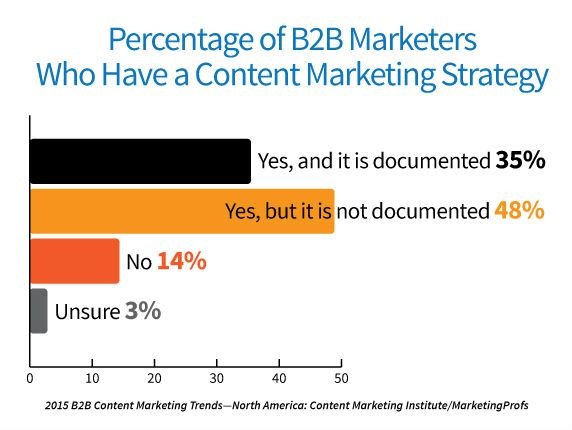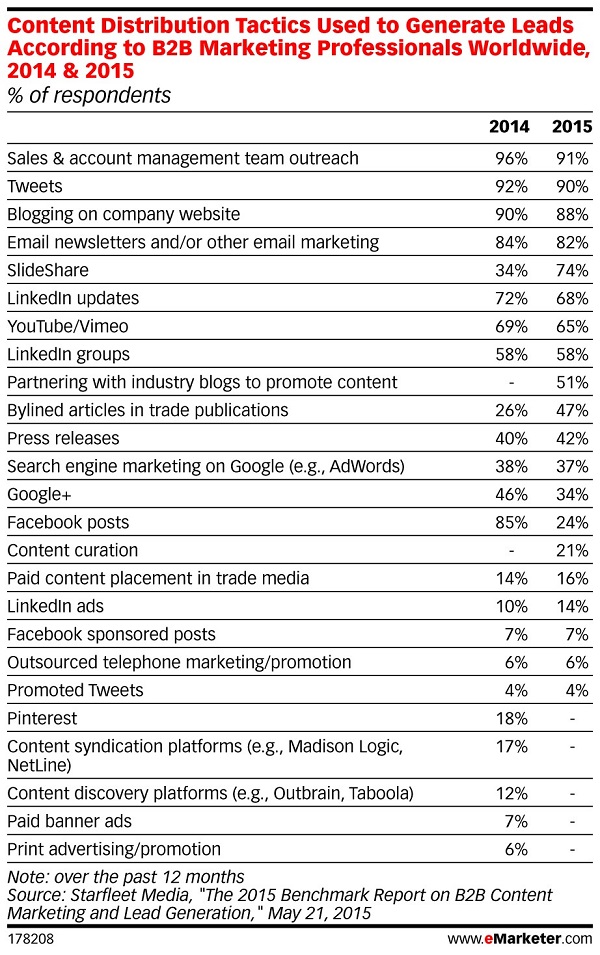You will find a good piece of content at the core of a successful email campaign. But that’s only one cog in the wheel. For an entire annual marketing plan to be a success you need a focused content strategy, something along the lines of what Michael Brenner has in mind in ‘What is Content Strategy and Why Do You Need it?’ on Forbes.com: “A content strategy flips the tables on traditional linear marketing by defining the process and then securing the right resources for producing a consistent stream of content mapped to buyer needs across all phases of the buying cycle. This is done for each buyer type or “buyer persona” that is involved in the B2B decision-making process.”
If you think content marketing isn’t easy, you are not alone (see below). Marketers assume they face unpredictable challenges designing a sustainable content marketing strategy. And then they have to implement it. But it may not be all that daunting.

Seventy percent of marketers say they are creating more content today than they did one year ago. That’s a quantum leap in both content creation and distribution. Marketers are learning how essential it is to have the right content, in the right channel, at the right time – every time a potential customer goes looking for an answer. Having a method to match the content creation madness helps marketers aim their energy, their money and, most crucially, their time in the right direction.
Content Marketing Institute’s research shows that marketers with a documented content strategy:

You need to ask yourself a few questions before you start a deep-dive into the elements of your strategy:
Once you have filled in those blanks, follow these simple steps for a well-rounded content strategy.
More often than not, marketers are sitting on a gold mine of unused content. A documented content inventory gives you a clear picture of where your existing content can be found, how well it performs, and what gaps remain unfilled.

The content calendar helps you nail down the content type, tone, audience and publishing schedule. For example, a retail solutions firm, not only wants to produce great content for potential customers interested in, say, retail operation optimization but also for potential new employees who want to know how good a company they are to work for
Decide how to distribute and promote your content. How long — duration — will you keep it published (limited time, indefinitely)? What’s the reusability across channels? Planning this will help you publish and promote the right content to the right channels.

Track how your content performs across the distribution channels and which promotions pay off. Optimize your content with an analytic approach based on agreed upon metrics.
Building and implementing a content strategy can be as easy as taking stock of existing content, filling in the gaps and then looking at the numbers coming in to tweak the content for the next round.
We would love to hear your thoughts on content marketing strategy and execution. What are your pain points? What really works for you?